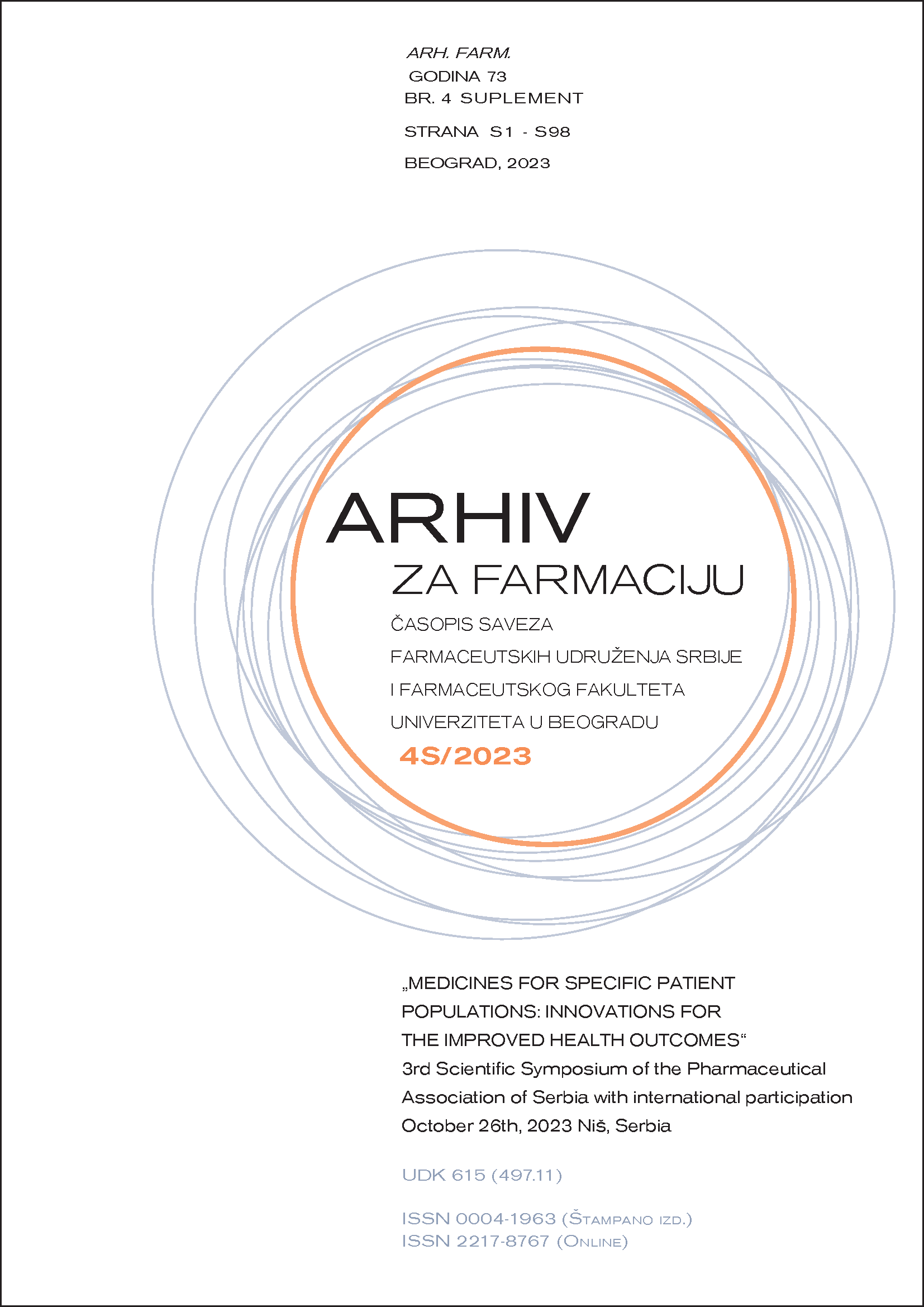ANTIOXIDATIVE POTENTIAL OF DRY AQUEOUS EXTRACTS OF SELECTED LAMIACEAE SPECIES
Abstract
Aromatic species of Lamiaceae family have been shown to possess antioxidative properties (1) which could be altered by pharmaceutical processing (2). Therefore, the antioxidative potential of dry aqueous extracts of herb top flowering thyme, Thymus serpyllum L, lemon balm, Melissa officinalis L. and rosemary, Rosmarinus officinalis L, grown on the Republic of Serbia territory was examined. Dried herbs were acquired from the Institute for Medicinal Plant Research "Dr Josif Pančić" and ground (0.254 mm). The dry extract was obtained by the infusion (Ph.Jug.IV) lyophilisation. Antioxidative potential was tested using the 1,1-diphenyl-2-picrylhydrazyl radical (DPPH) method with ascorbic acid as positive control (1). Dry extract concentrations that inhibited 50% of DPPH radicals (IC50) were 2.43 μg/mL, 6.29 μg/mL and 32.37 μg/mL for thyme, lemon balm and rosemary, gained from the equations y=21712.00x-2.70, y=12043.00x-25.71 and y=1538.10x+0.21, respectively (N=1, n=3). All tested extracts demonstrated DPPH scavenging ability with IC50 values lower than expected (1,3). Rosemary extract showed significantly higher IC50 value and lower antioxidative potential, compared to thyme and lemon balm, whose IC50 were statistically similar. Seemingly different radical scavenging activity may have resulted from the differences in species’ phytochemical profiles and the extract generation (1,3). However, selected way of material processing provided a wide range of possibilities for extract analysis and usage. Further research could therefore include a wider species palette as well as thorough investigation of the dry extracts’ content. Lyophilised aqueous infusions of aromatic species of the Lamiaceae family demonstrated strong antioxidative potential that may vary between the species.
References
1. Ramos da Silva LR, Ferreira OO, Cruz JN, de Jesus Pereira Franco C, Oliveira dos Anjos T, Cascaes MM, Almeida da Costa W, Helena de Aguiar Andrade E, Santana de Oliveira M. Lamiaceae essential oils, phytochemical profile, antioxidant, and biological activities. Evid. Based Complementary Altern. Med. 2021.
2. Jovanović AA, Djordjević VB, Petrović PM, Pljevljakušić DS, Zdunić GM, Šavikin KP, Bugarski BM. The influence of different extraction conditions on polyphenol content, antioxidant and antimicrobial activities of wild thyme. J. Appl. Rese. Med. Aromat. Plants. 2021; 25:100328.
3. Gođevac D, Zdunić G, Šavikin K, Vajs V, Menković N. Antioxidant activity of nine Fabaceae species growing in Serbia and Montenegro. Fitoterapia. 2008; 79(3):185-7.

